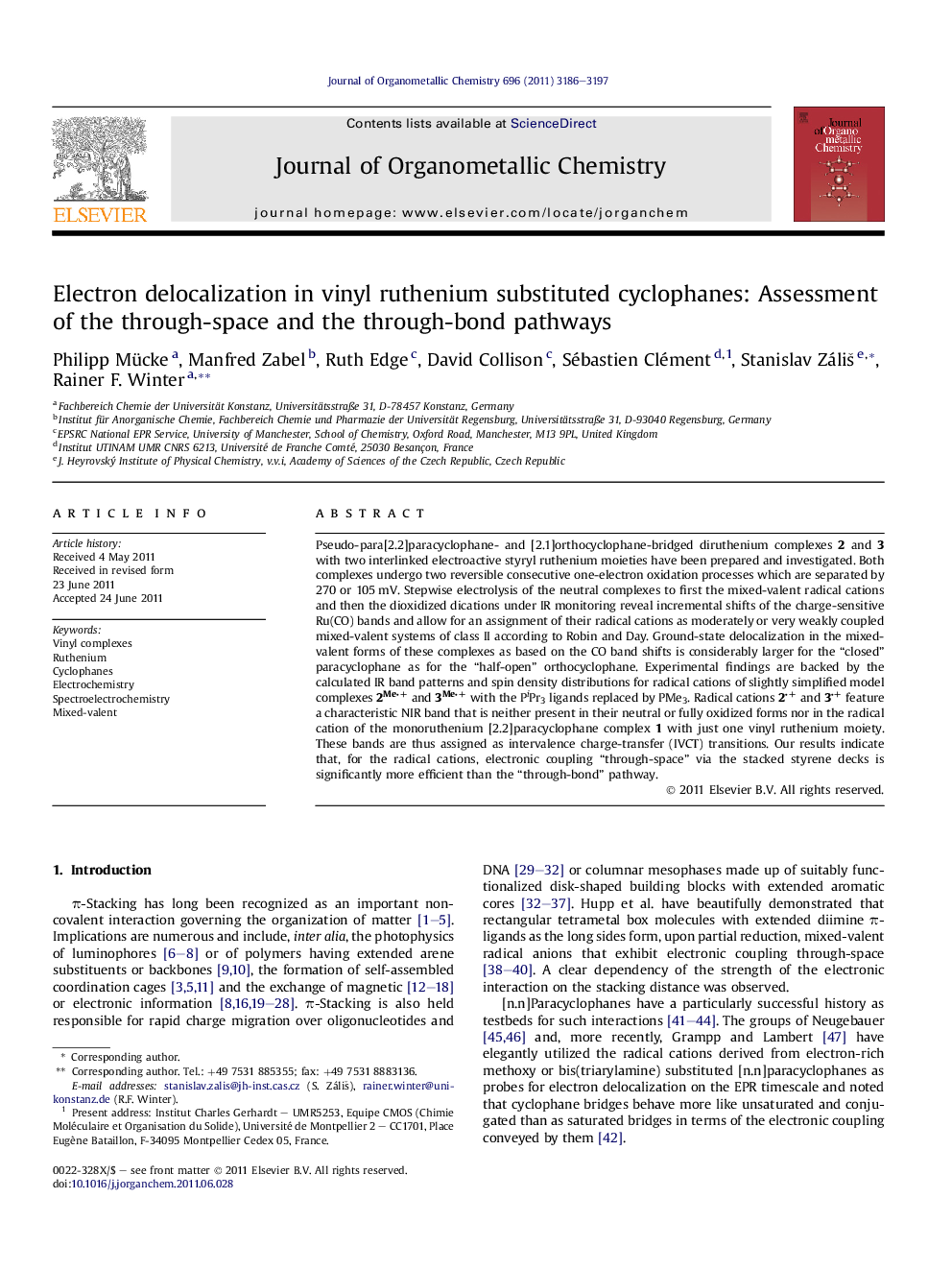| کد مقاله | کد نشریه | سال انتشار | مقاله انگلیسی | نسخه تمام متن |
|---|---|---|---|---|
| 1325205 | 977374 | 2011 | 12 صفحه PDF | دانلود رایگان |

Pseudo-para[2.2]paracyclophane- and [2.1]orthocyclophane-bridged diruthenium complexes 2 and 3 with two interlinked electroactive styryl ruthenium moieties have been prepared and investigated. Both complexes undergo two reversible consecutive one-electron oxidation processes which are separated by 270 or 105 mV. Stepwise electrolysis of the neutral complexes to first the mixed-valent radical cations and then the dioxidized dications under IR monitoring reveal incremental shifts of the charge-sensitive Ru(CO) bands and allow for an assignment of their radical cations as moderately or very weakly coupled mixed-valent systems of class II according to Robin and Day. Ground-state delocalization in the mixed-valent forms of these complexes as based on the CO band shifts is considerably larger for the “closed” paracyclophane as for the “half-open” orthocyclophane. Experimental findings are backed by the calculated IR band patterns and spin density distributions for radical cations of slightly simplified model complexes 2Me+ and 3Me+ with the PiPr3 ligands replaced by PMe3. Radical cations 2+ and 3+ feature a characteristic NIR band that is neither present in their neutral or fully oxidized forms nor in the radical cation of the monoruthenium [2.2]paracyclophane complex 1 with just one vinyl ruthenium moiety. These bands are thus assigned as intervalence charge-transfer (IVCT) transitions. Our results indicate that, for the radical cations, electronic coupling “through-space” via the stacked styrene decks is significantly more efficient than the “through-bond” pathway.
[2.2]Paracyclophane- and half-open [2.1]orthocyclophane-bridged diruthenium complexes are compared with respect to the electronic coupling in their mixed-valent states. Ground-state delocalization as measured by Geiger’s charge distribution parameter is considerably larger for the paracyclophane in spite of nearly identical “through-bond” distances for the two complexes.Figure optionsDownload as PowerPoint slideHighlights
► Styryl ruthenium complexes derived from [2.2]para- and [2.1]orthocyclophanes.
► electrochemical and spectroelectrochemical studies.
► spectroscopic characterization of the mixed-valent radical cations and the dications.
► quantitative assessment of electron delocalization within the radical cations of dinuclear complexes.
► mutual relevance of the through-bond and the through-space pathways to overall electron delocalization.
Journal: Journal of Organometallic Chemistry - Volume 696, Issue 20, 1 October 2011, Pages 3186–3197